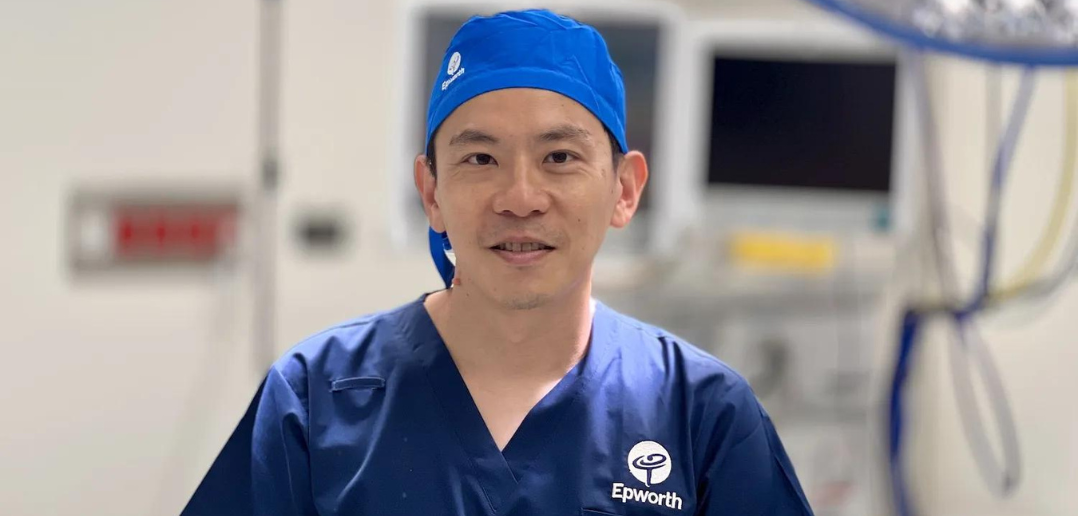Victorian-first tumour removal at Epworth

30/04/24
Surgeons at Epworth Richmond have used cutting-edge technology to save a woman with a pancreatic tumour.
Jenny, 32, gained around 15 kilograms in weight while at home during the COVID-19 pandemic, and thought she had just “put on COVID kilos”.
However, after returning to work she felt unwell and discovered it was something more serious.
“I was at work with a customer and was trying to log on to my computer, and I just kept typing but I didn’t know what I was doing,” Jenny said.
“The customer kept talking to me, but I wasn’t responding. They got my manager who asked me if I knew where I was, and I just couldn’t answer him.”
Jenny’s colleagues suspected it was simply a case of low blood sugar, and after having some lollies she felt better and went home to rest.
Her general practitioner referred her to an endocrinologist, who ordered scans which uncovered an insulin-producing neuroendocrine tumour – a rare malignant cancer also known as an insulinoma that starts in the islet cells of the pancreas.
Jenny was advised she would need a Whipple procedure, a major surgery where part of the pancreas, stomach and small intestine are removed.
However, a second opinion from Epworth Richmond surgeon Dr Osamu Yoshino changed all that.
“An insulin-producing neuroendocrine tumour can cause significant symptoms similar to someone having a stroke, including losing consciousness or the ability to speak,” Dr Osamu said.
“In the worst-case scenario, someone can suffer brain damage.”
Rather than the major Whipple procedure, Dr Osamu opted for a Victorian first, using a robot to perform minimally-invasive surgery known as a “robotic enucleation of the pancreatic tumour”.
Having a tumour “enucleated” means it is removed clean and whole, like a nut from its shell.
“The surgery involves intense work very close to the pancreatic duct, which is less than a millimetre wide, so we are guided during the operation with the assistance of a very small ultrasound probe which can be used inside of a patient’s abdomen,” Dr Yoshino said.
“Carrying out the minimally-invasive robotic surgery, instead of an open Whipple procedure, means the operating time is reduced from eight to three hours.
“There’s less time in hospital, less scarring and a faster recovery time.”
Epworth Richmond has a long history of surgical innovation.
It was the first hospital in Australia to introduce robotic procedures, carried out on a prostate cancer patient in December 2003, and has since performed a number of breakthrough operations.
